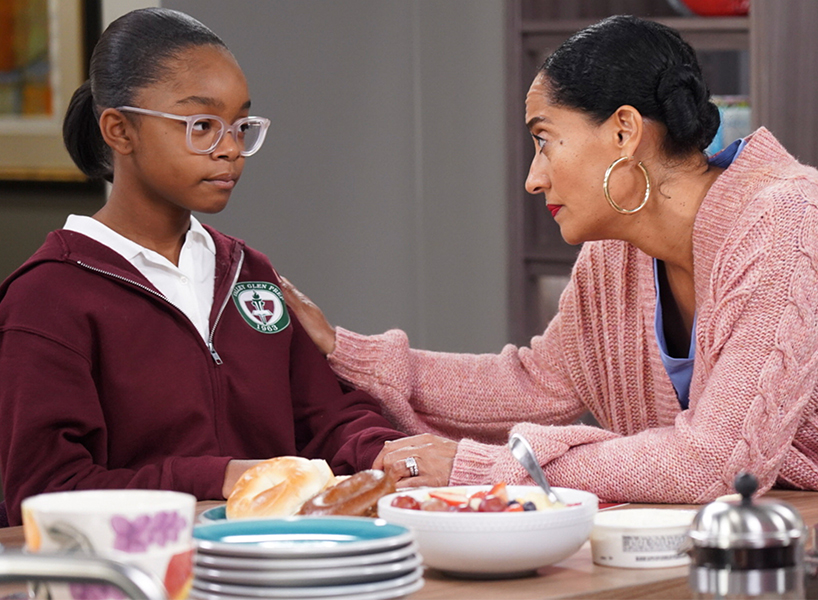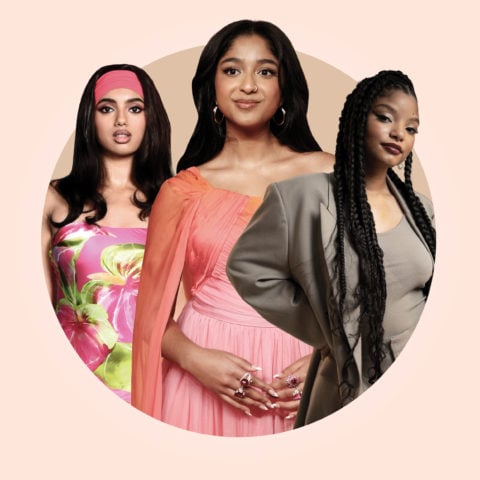I Love That Black-ish Took on Colourism, But It Missed One Big Thing
The show's "Black Like Us" episode is a must watch


It’s not often you get to see a discussion about colourism in the Black community depicted on a mainstream television show. In fact, if I’m honest, it’s never. So, it was refreshing and cathartic to tune into a recent episode of Black-ish and see a Black family getting into it over light-skin privilege and “team dark skin.” If these phrases mean nothing to you, you are lucky. It means that you live in a world where your skin colour is validated, where your complexion isn’t used to make assumptions about you, and where your beauty is not pegged to your proximity to whiteness. As discussed in Black-ish season 5, episode 10, that is not the case for everyone.
In her autobiography We’re Going to Need More Wine, Gabrielle Union describes the issue of colourism by saying, ”It’s an age-old ‘us against us’ oversimplification, that boils down to the belief that the lighter your skin tone, the more valuable and worthy you are. The standard of beauty and intelligence, that has historically been praised by the oppressor, has been adopted by the oppressed.”
In Black-ish’s “Black Like Us” episode, written by the show’s executive producer Peter Saji, parents Rainbow (Tracee Ellis Ross) and Dre (Anthony Anderson) discover that the lighting used for their daughter’s school picture was not conducive to photographing Black skin. As a result, like many Black kids before her, Diane (Marsai Martin) is literally faded into the shadows and can barely be seen. The show then veers into a discussion about colourism, addressing the stereotypes that often come with being light-skin, like the idea that light-skin men are ‘soft,’ as well as the discrimination that both dark-skin and light-skin Black people deal with.
“Diane, I had no idea that this hurt you so much,” Rainbow says when Diane confronts her family.
“How could it not?” responds Diane. In the scene, clips showing how dark-skin women face different beauty standards, are told they’re “gorgeous for a dark-skinned girl” and are overlooked by major companies (e.g. bandages that only cater to pale people) flash on screen. “It’s everywhere I look. It’s everyone I talk to.”
When I think about how this makes me feel as a dark-skin Black woman, and the messages it sends to my dark-skin daughter or my light-skin son, about the value ascribed to dark-skin women, there’s an overwhelming wave of despair. Like many Black siblings—and the kids portrayed in Black-ish—my kids are two different shades of brown. The range of shades in our family runs the gamut, as the show says, “from Mariah Carey to Wesley Snipes.” For me, this has meant enduring questions, often from complete strangers about whether my children have different fathers, and repeatedly hearing compliments about my beautiful light-skin baby son but rarely about my dark skin-daughter.
It was great to see a mainstream show articulate that “light skin is the Black standard of beauty” or that, “they [the media] only choose one dark-skinned woman to celebrate every 10 years.” But while the show touched on the lack of dark-skin women in magazines and on TV, it did not address the dark-skin privilege Black men have—and how that’s even reflected on Black-ish itself.
While it may not have gotten called out in the show, it certainly was on Black Twitter.
funny how dre didn’t really touch junior’s comment about him liking light skin women but calling light skin men soft…feels like the gendered element of colorism wasn’t fully engaged #blackish
— little karen minty (@theineffability) January 17, 2019
@blackishabc #blackish It’s interesting that Dre makes the comment about only seeing light-skinned Blacks when many Black actors are in fact dark-skinned. On TV at least, #colorism seems to affect dark-skinned women more.
— Shadow and Act (@shadowandact) January 16, 2019
Black men are allowed to have dark skin—we see dark-skin men as fathers in Black-ish and This is Us, they are objects of desire in the form of Idris Elba, Michael B. Jordan and Denzel Washington (in his prime)—but what is disheartening, invalidating and downright disempowering is the fact that they are consistently paired with women who are lighter than them. It is exceedingly rare to find a depiction in any mainstream show or movie (except, perhaps Insecure) where a dark-skin man is in a relationship with a dark-skin woman. For many dark-skin women, this type of casting makes us feel as though we are being erased—just like in Diane’s school photo.
So, while Black-ish pushed the needle in driving an open discussion around colourism in Black communities, it didn’t go far enough to challenge the colourism inherent in how Black love is portrayed on screen. A bolder step would have been to reflect on why, like nearly all shows depicting Black couples, Black-ish paired a dark-skin Black man with a light-skin Black woman, like in so many other examples on TV and in movies.
In fairness, covering an issue as complex and contentious as colourism in the Black community in approximately 22 minutes is next to impossible—which is part of the reason why it took the writers five years to create an episode about this issue. Overall, Black-ish did shine a much-needed light on this issue, I just wish they hadn’t left the imbalance between men and women in the shadows.
Related:
Black Panther’s Superpower Is How It Diversifies Black Stories
Here’s How the Woman Behind the Camera on Insecure Properly Lights Its Black Actors
12 Days of Feminists: Tracee Ellis Ross








